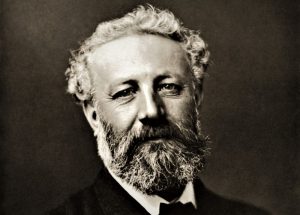Cacophony
Within oral and written language, there are certain vices that can be generated consciously or unconsciously at the moment of expressing an idea. Examples of these are pleonasm, archaism, impropriety and cacophony. The last one is one of the vices of the language that generates certain dissonances in the pronunciation of ideas that are well constructed syntactically and grammatically.
What is cacophony?
Cacophony is a vice of language that occurs when there are sounds or syllables within a sentence that are pronounced in the same or similar way and are shocking to the reader. In literature, it is used in tongue twisters and as a humorous resource, while in the field of didactics, it is used to improve the pronunciation of foreign language students. The antonym for cacophony is euphony.
The cacophony in Spanish language is used in the construction of tongue twisters for children in order to improve their pronunciation fluency. It is also used in the teaching of foreign languages, especially with children and teenagers.
It is also used by humorists to play on words or to generate a funny effect in their texts. In poetry, this vice of language is not often seen because in this genre, each word has its own particular importance. Writers such as Cervantes and Quevedo made use of cacophony in many of their works.
In urban and rural language, it is easy to identify some examples of cacophony that are sometimes unavoidable, such as: “he told me what he was doing”, “Laura calls Alberto”, “the box fits perfectly” and so on.
Euphony is the antonym of cacophony and refers to a sound effect that is pleasant and aesthetic in the words used in a message.
History of cacophony
It is difficult to determine the origin of cacophony since it is given with words that have syllables that are pronounced in the same or similar way. However, it could be said that cacophony as a vice of language has become very common in rural and marginal towns where there is no abundance of lexicon to express themselves orally and in writing.
Many recognized writers of the Spanish language have made use of cacophony in their literary works. For example, Miguel de Cervantes and Francisco Quevedo used it in many of their works.
Etymology
The word cacophony is of Greek origin and is formed by the word “caco” or “caca” which means “unpleasant, horrible” and “fonía” which refers to the action of ” speaking”. This is usually defined as bad speech.
Types
Although there is no typology of cacophony studied by specialists in Spanish linguistics, it could be said that this vice of the language can occur in two ways; intentional or unintentional.
Intentional cacophony is used for the purpose of demonstrating skills when vocalizing a group of words that have similar or equal syllables without making mistakes. This is the case with tongue twisters. This type of oral text is used in many schools to improve student pronunciation and diction. Example: Pablito nailed a nail, that bald nail Pablito.
The unintentional cacophony is that vice of the language produced in an unconscious way, or by lack of lexicon to express an idea with words with syllables that are not pronounced the same or similar. Example: he told me what he was doing, instead of saying: he asked me what I was doing.
The intentional use of cacophony in tongue twisters could be found in rural villages where such texts were used in recreational and educational ways to improve the pronunciation and diction of children and adolescents in the community.
Examples of sentences with cacophony
Several examples of cacophony are presented below.
Example 1
“Three sad tigers swallowed wheat in one wheat field in three sad wrecks.”
Example 2
“Peter Perez asks permission to leave for Paris, to put on a false wig because it looks like a peeled pig.”
Example 3
“Discovered you have the poop with the poop you sing”
Example 4
“And let me die yet I don’t know what’s left babbling”
Francisco de Quevedo
Example 5
“When he fell I had already arrived”
Example 6
“I put it in, and she takes it out.”
Example 7
“The one who eats little coconut, buys little coconut,
the one who covers little layer, little layer is bought.
As I eat little coconut, I buy little coconut,
and as little layer I cover myself, little layer I buy myself”
Example 8
“I can go to the pool, but my friend doesn’t swim at all”
Example 9
“It’s five minus five, five to five, how many times did I say five without counting the last five?”
Example 10
“Spying were the spies when they spied on them.”
How to cite this article?
Briceño V., Gabriela. (2019). Cacophony. Recovered on 23 February, 2024, de Euston96: https://www.euston96.com/en/cacophony/










